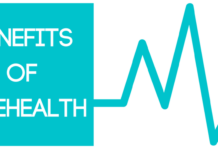The medical landscape has evolved dramatically over the past few decades, moving towards more personalized and effective treatment strategies. Among the forefront of this evolution is the rise of combination therapies an approach that involves layering two or more treatments to maximize therapeutic benefits. Unlike traditional monotherapies targeting a single pathway, combination therapies address the complexity of many diseases by attacking multiple biological targets simultaneously. This multi-pronged approach has proven especially critical in tackling chronic diseases, infectious diseases, cancer, and autoimmune disorders, thereby revolutionizing how healthcare providers improve patient outcomes.
Understanding Combination Therapies
Combination therapy, sometimes called polytherapy, refers to the simultaneous use of multiple medications or modalities to treat a single disease or condition (Wikipedia, 2005). These combinations may include two or more drugs, or the integration of pharmacological treatments with non-drug interventions such as lifestyle changes or physical therapy. By targeting different disease mechanisms concurrently, this strategy can achieve a synergistic effect—where the combined impact surpasses the effect of the individual treatments alone.
Advantages of Combination Therapies
One of the most critical benefits of combination therapies is their ability to significantly reduce the development of drug resistance. In many diseases, especially infections and cancer, resistance to treatment emerges when pathogens or cancer cells evolve to evade the effects of a single drug. Using multiple agents targeting distinct pathways reduces the likelihood that the disease will simultaneously develop resistance to all components, thereby extending the effectiveness of therapy (Wikipedia, 2005).
Moreover, combination therapies often allow for lower doses of individual agents, which minimizes side effects and improves the overall safety profile. This dose reduction is possible because drugs in combination may enhance each other’s efficacy through synergistic interactions, thereby reducing the required dosage to achieve therapeutic effects (Cheng, Kovács, & Barabási, 2016).
Applications in Oncology
Cancer treatment exemplifies the transformative potential of combination therapies. Tumors are inherently heterogeneous, composed of cells with various genetic and molecular profiles, which calls for multi-targeted approaches. Modern oncology frequently uses combinations of chemotherapeutic agents, targeted therapies, immunotherapies, and radiation to attack tumors from multiple angles. These combinations can increase response rates, delay resistance, and improve survival compared to single-agent treatments.
Personalized medicine has further enhanced combination therapy by tailoring drug regimens based on tumor biomarkers and genetic profiles. Advances in systems biology and computational tools now help identify the most effective drug combinations, paving the way for precision oncology that leverages combination approaches thoughtfully (JoVE, 2025).
Broader Clinical Uses
Beyond cancer, combination therapies have become standard in many other therapeutic areas. For example, infectious diseases like HIV, tuberculosis, and malaria rely heavily on combination regimens to enhance efficacy and mitigate resistance development. In cardiovascular medicine, patients with hypertension often receive multiple medications such as diuretics combined with calcium channel blockers to better control blood pressure and reduce adverse effects more effectively than monotherapy (Hammond et al., 2022).
Similarly, asthma management routinely employs a blend of glucocorticoids and β₂-adrenoceptor agonists to improve lung function through complementary mechanisms. The success of these approaches underscores the versatility of combination therapies in diverse clinical scenarios.
Challenges and Considerations
While the benefits of combination therapies are clear, their implementation poses challenges. Potential drug-drug interactions can increase toxicity or reduce efficacy, demanding careful evaluation during regimen design (Cheng et al., 2016). Manufacturing combination drugs also involves technical intricacies related to drug stability and pharmacokinetics.
Regulatory and economic hurdles exist as well—especially when combining drugs developed by multiple pharmaceutical companies. Coordinating approvals, pricing, and reimbursement for combination products can be burdensome, limiting access despite clear clinical advantages (ABPI, 2024).
Additionally, patient adherence can suffer if combination regimens become too complex, highlighting the need for simplified dosing schedules and fixed-dose combination pills where possible.
The Future of Combination Therapies
Advances in genomics, artificial intelligence, and high-throughput drug screening continue to accelerate the discovery and optimization of combination regimens. The paradigm of polypharmacology—targeting multiple disease pathways simultaneously—reflects an evolving understanding of complex diseases as multifactorial and interconnected processes (Cheng et al., 2016).
As research continues, combination therapies are projected to become even more personalized, integrating biomarkers and real-time patient data to adapt treatment over time. These innovations promise to make combination therapy safer, more effective, and more accessible.
The rise of combination therapies marks a significant milestone in medical treatment, offering optimized outcomes through the strategic layering of treatments. From combating drug resistance to enhancing therapeutic efficacy and reducing side effects, this approach is reshaping how clinicians manage complex diseases. As science and technology advance, combination therapies will remain a cornerstone of precision medicine, delivering tailored, multi-faceted care that maximizes patient benefits.
References
-
ABPI. (2024). Patient access to combination therapies. UK Competition and Markets Authority.
-
Cheng, F., Kovács, I. A., & Barabási, A.-L. (2016). Drug combination therapy increases successful drug repositioning. PMCID: PMC4907866.
-
Hammond, S. C., et al. (2022). Study Designs for Evaluation of Combination Treatment. PMCID: PMC8869609.
-
JoVE. (2025). Cancer Combination Therapies and Personalized Medicine.
-
Wikipedia. (2005). Combination therapy. Retrieved from https://en.wikipedia.org/wiki/Combination_therapy
-
Fiveable. (n.d.). Combination Therapies – Introduction to Pharmacology.
-
Taylor & Francis. (2019). Combination therapy – Knowledge and References.










